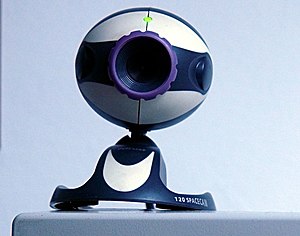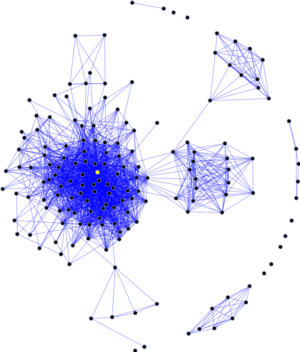
- Image via Wikipedia
I am on a panel to help choose the next Director of Online Learning at the Colorado Department of Education. The panel itself is an cross-section of interests, from higher education to non-profits to multi-district online programs, each of the people who are interviewing the candidates is looking for something different. And, truly, that is the way it should be. If we were all looking for the same thing, there probably wouldn’t be any need for an interview at all. We could just decide based upon the resumes alone.
The interviews commenced today and all 9 of us were able to ask our predetermined questions. We listened as this candidate answered to the best of his ability, and we feverishly scribbled notes on the official document, our own personal notepad, or (in my case) typed in a few thoughts on a brainstorming app on the iPad. The hour it took to hear all of what this person had to offer was not an undaunting task for either side. I’m sure that he struggled in some of the questions more than he let on and I’m sure that there was some struggle on our part to really see how well we could get to know him in the short time we were allotted.
The more that I thought about the process we underwent and the process that happens in so many conference rooms every day is incredibly strange. We sit together and grill someone on questions that will ultimately decide their fate, but are incredibly inadequate to determining if they would actually do a good job in the position for which they have applied. The questions we asked, about vision and communication and specific data and standards, all of them were in an attempt to paint a picture of who this person is. But, what we really want to know (or at least what we should want to know) is who this person would be in this position. Because we had no crystal ball today (neither the candidate or the interviewers), no one could really see what it would be like to have him leading the department.
Even though we do not have such a gift of seeing into the future and predicting the fit that a particular person would have within a given position, I think that we have the tools for which we could create a much better process for getting the right person for the job. Here is what I have in mind:
- Day in the life: I would like the candidates to take us through a day in the life of what he or she is doing currently, showing us concrete situations that cater to their strengths. The easiest way to do this would be to collect some objects that are of significance to their work (reports, documents, presentations, etc.) and show off their workflow within them in a synchronous format (live or in a virtual setting0. I would also like to demonstrate a day in the life of the position they are applying for. This would allow them to get a feel for exactly what they are getting themselves into. I think the easiest way to do this would be to take a snapshot of the director’s computer screen every few minutes and then do a time lapse of activities. I could also see this working for the candidate’s demonstration as well.
- Real problems: Rather than asking generic questions, I would really love to see how a candidate would solve an issue that is concerning the current stakeholders. I think that the products from this type of collaborative work to solve a single issue would provide a much better comparison of applicants than simply asking them about a problem they have solved in the past.
- Learning Network: I would like to know more about who these people turn to for advice and learning. I would like to see who their learning network consists of. To me, each of these candidates should have to demonstrate just how they go about dealing with a question that they don’t know the answer to. I would actually like to watch them put in a request to their learning network and see how long it takes to get a series of responses. A decent set of responses in a short amount of time would say to me that this person actually has set up a system of support that will be of value to the whole organization. It says that we are not only hiring this person but also all of the people that she or he knows.
While these may be a radical shift away from current interviewing practices, I actually believe that an emphasis on these three things is going to allow us to compare apples to apples. It will also show just how hard it is to fake your way through actual work, rather than just being able to interview well. It will show exactly what we value as well, which I think is important in any economic climate, regardless of how desperately the candidate is for the position or how desperate we are to fill it. In the end, our values are what will cause someone to stay with a job long enough to create lasting change and sustained growth. Let’s make sure they match up.
Related articles by Zemanta
- Why I don’t do interviews (scripting.com)
- Interview Skills (slideshare.net)







